Full text
PDF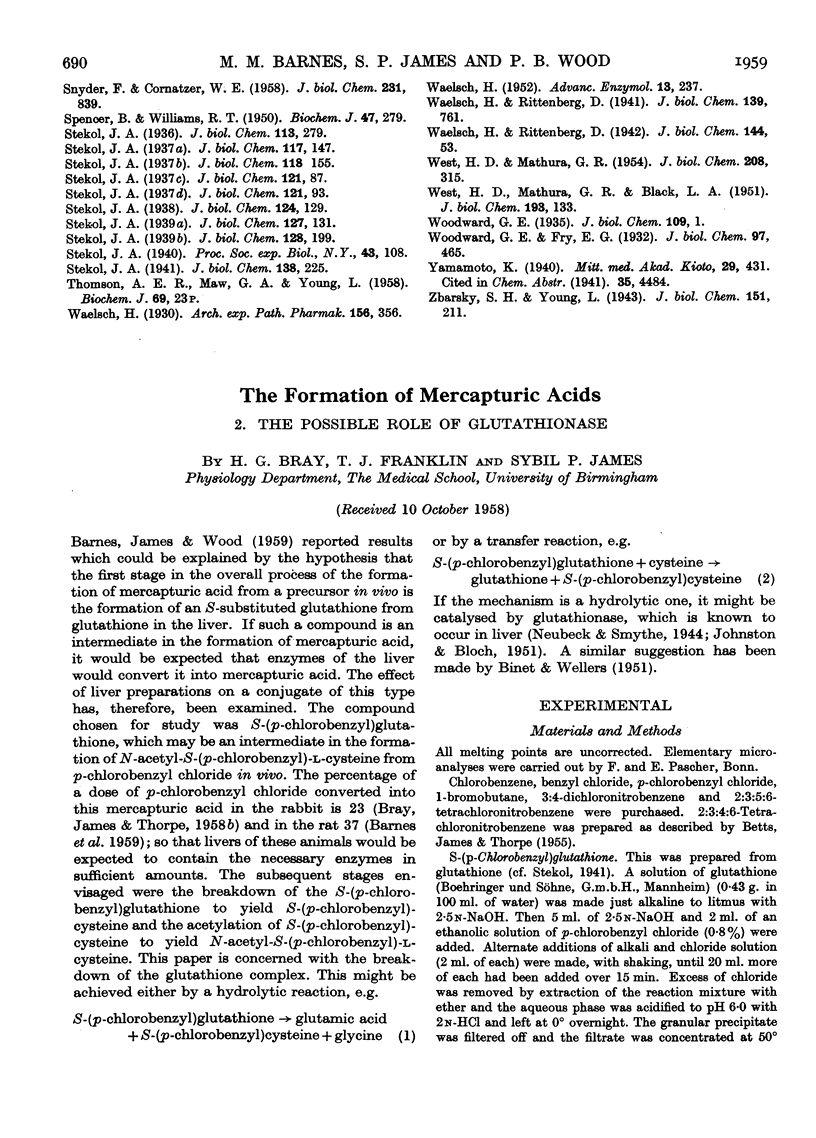
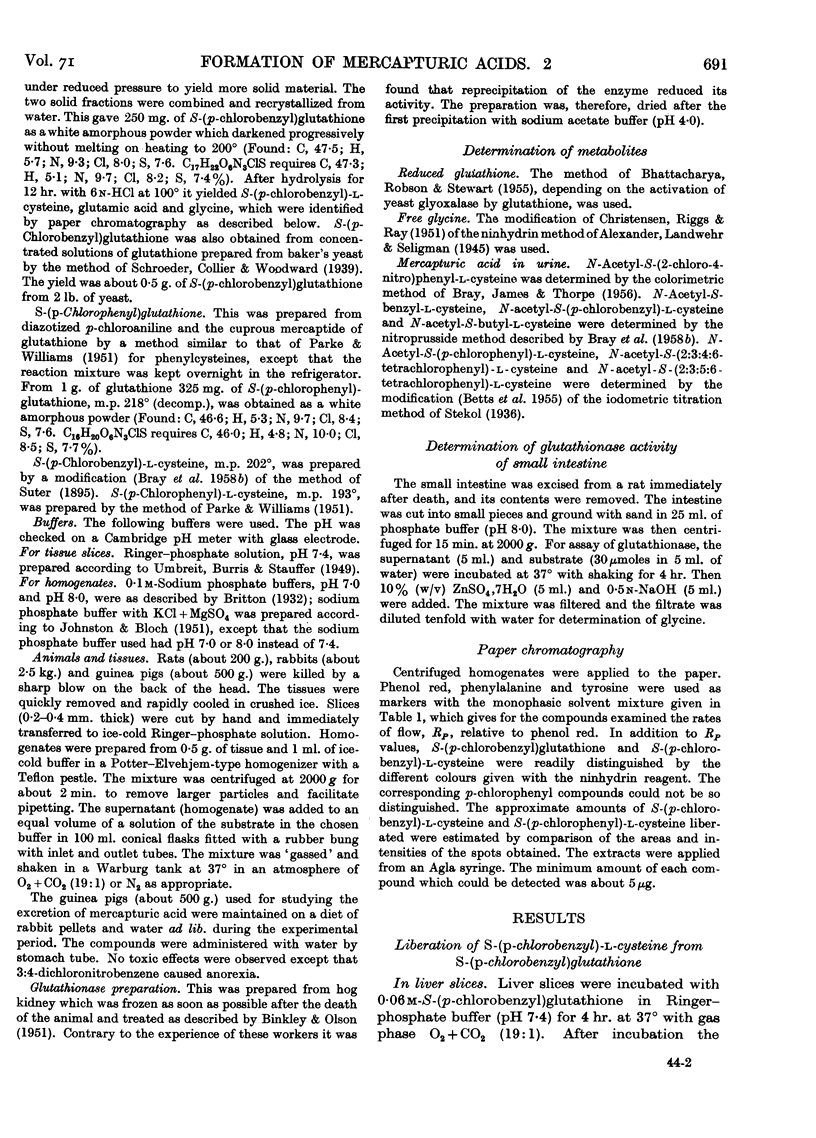
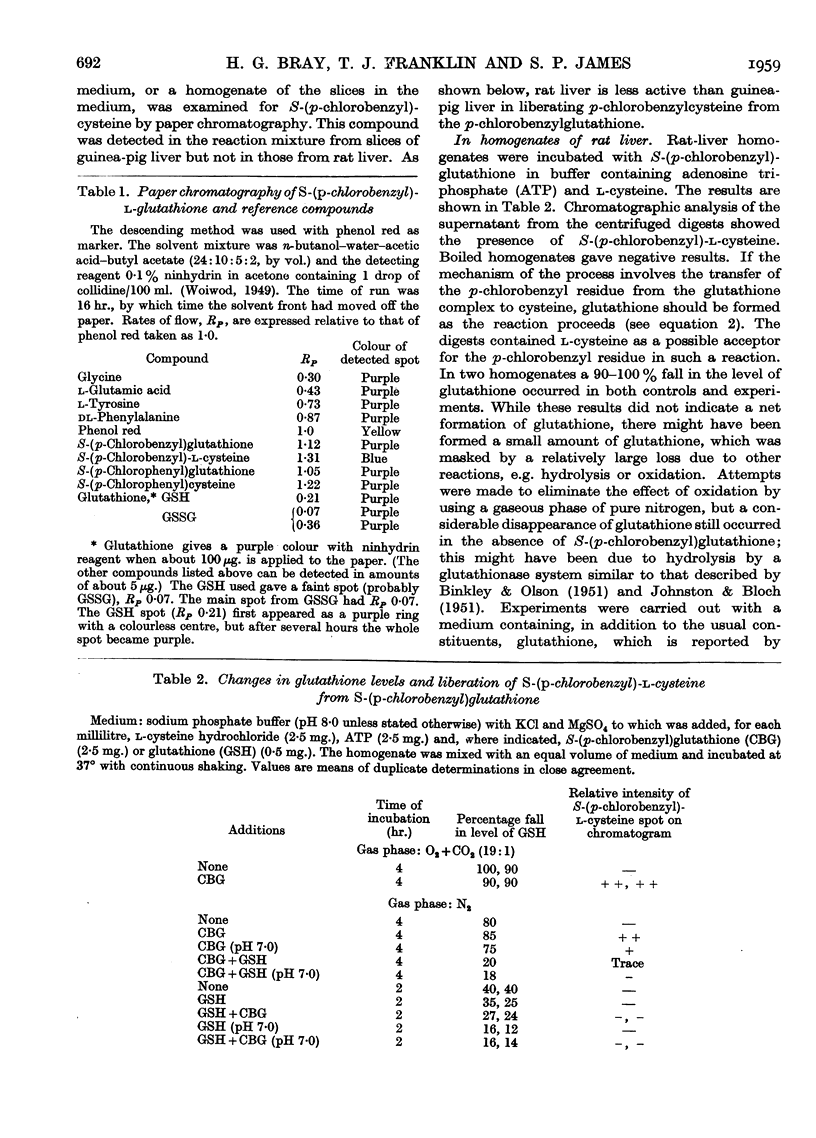
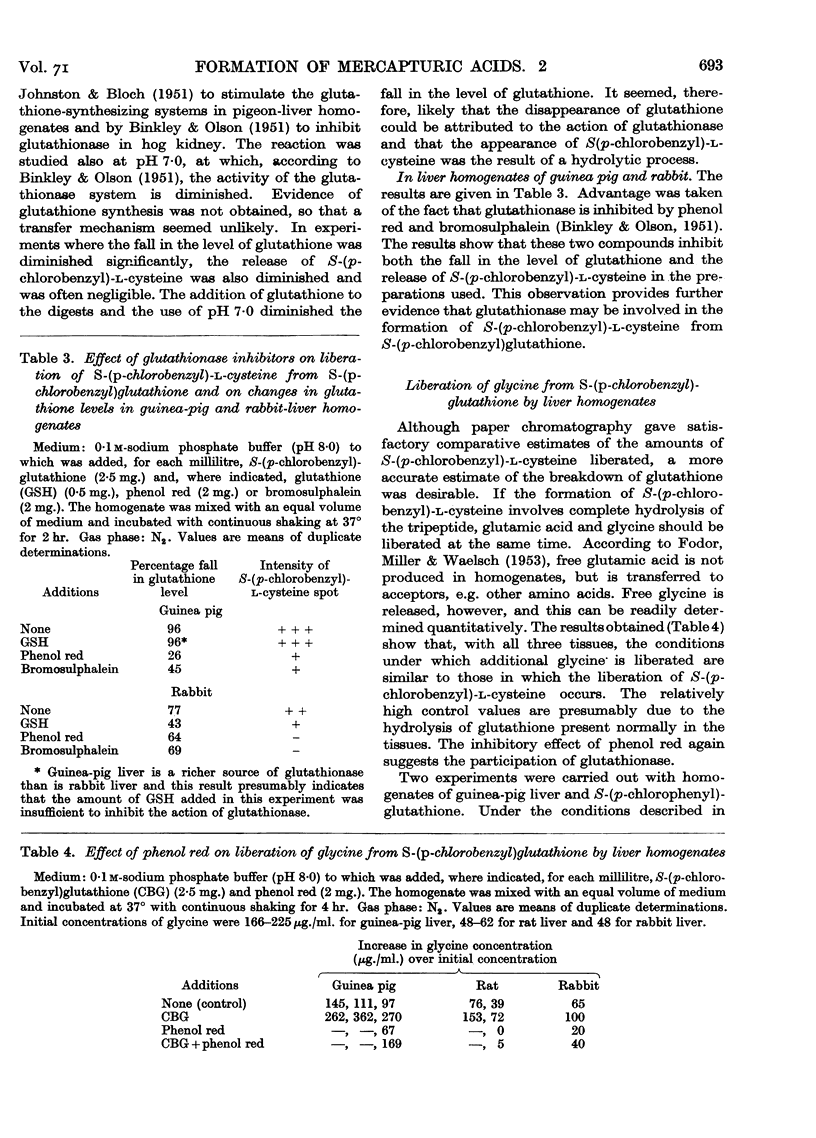
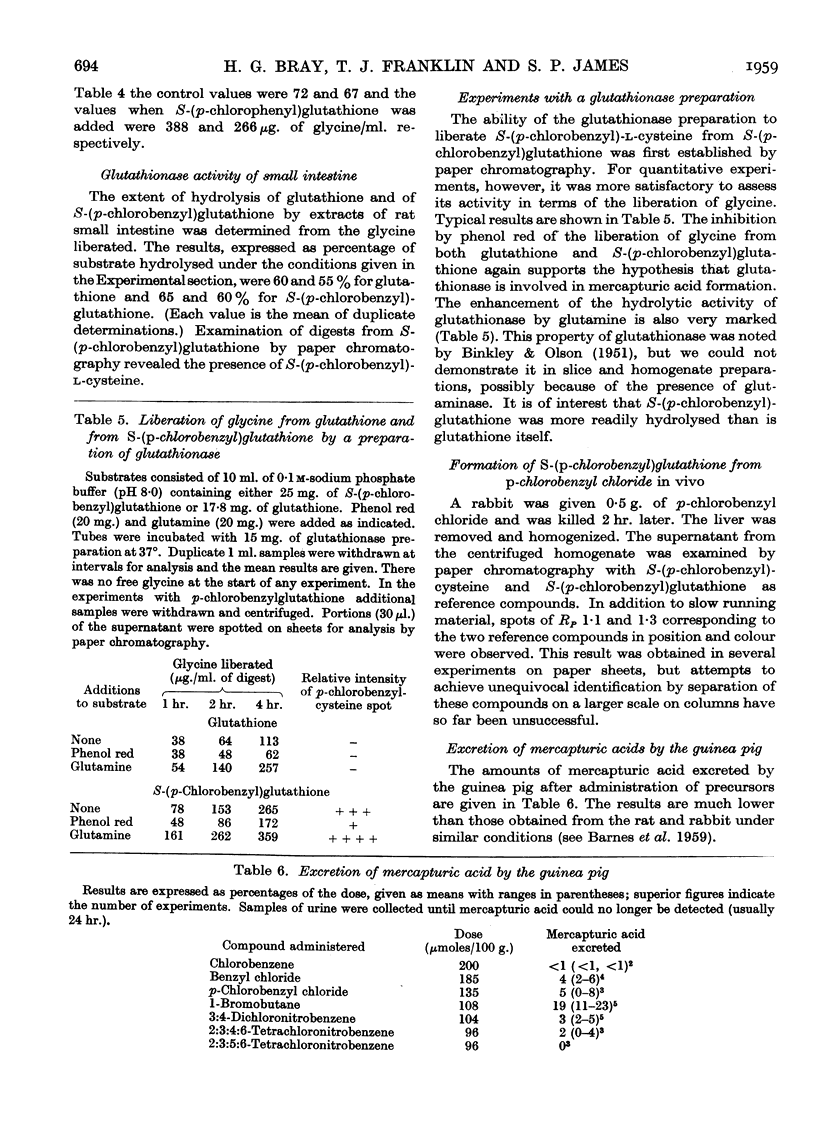
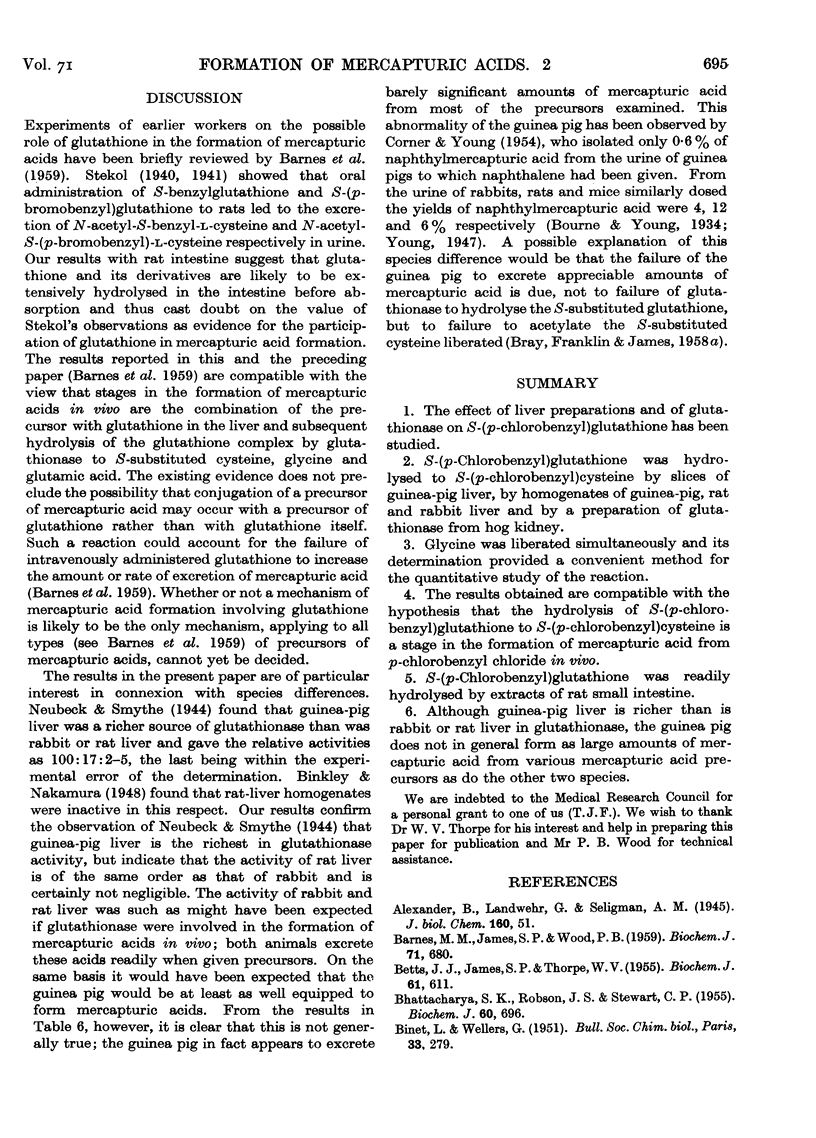
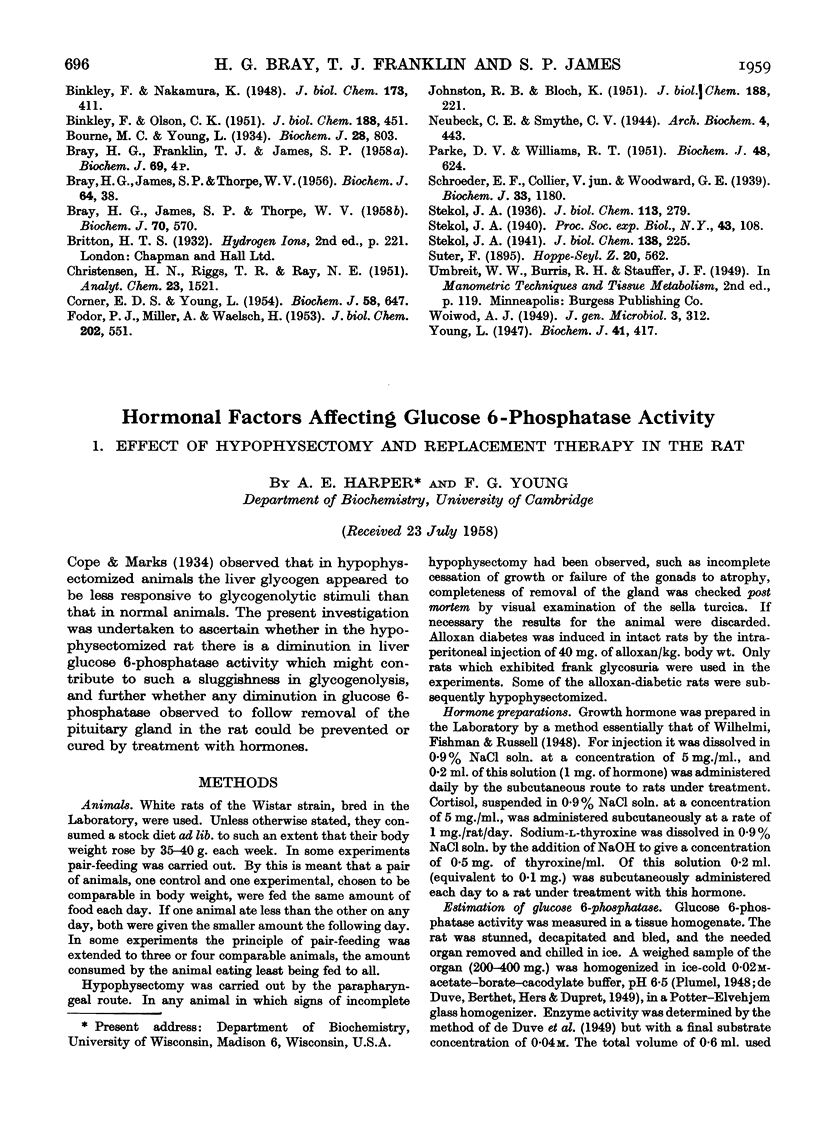
Selected References
These references are in PubMed. This may not be the complete list of references from this article.
- BARNES M. M., JAMES S. P., WOOD P. B. The formation of mercapturic acids. 1. Formation of mercapturic acid and the levels of glutathione in tissues. Biochem J. 1959 Apr;71(4):680–690. doi: 10.1042/bj0710680. [DOI] [PMC free article] [PubMed] [Google Scholar]
- BETTS J. J., JAMES S. P., THORPE W. V. The metabolism of pentachloronitrobenzene and 2:3:4:6-tetrachloronitrobenzene and the formation of mercapturic acids in the rabbit. Biochem J. 1955 Dec;61(4):611–617. doi: 10.1042/bj0610611. [DOI] [PMC free article] [PubMed] [Google Scholar]
- BHATTACHARYA S. K., ROBSON J. S., STEWART C. P. The determination of glutathione in blood and tissues. Biochem J. 1955 Aug;60(4):696–702. doi: 10.1042/bj0600696. [DOI] [PMC free article] [PubMed] [Google Scholar]
- BINET L., WELLERS G. Rôle du glutathion lors de l'intoxication du rat par le monobromobenzène. Bull Soc Chim Biol (Paris) 1951;33(3-4):279–285. [PubMed] [Google Scholar]
- BINKLEY F., OLSON C. K. Metabolism of glutathione. IV. Activators and inhibitors of the hydrolysis of glutathione. J Biol Chem. 1951 Feb;188(2):451–457. [PubMed] [Google Scholar]
- BRAY H. G., JAMES S. P., THORPE W. V. Metabolism of some omega-halogenoalkylbenzenes and related alcohols in the rabbit. Biochem J. 1958 Dec;70(4):570–579. doi: 10.1042/bj0700570. [DOI] [PMC free article] [PubMed] [Google Scholar]
- BRAY H. G., JAMES S. P., THORPE W. V. The metabolism of the monochloronitrobenzenes in the rabbit. Biochem J. 1956 Sep;64(1):38–44. doi: 10.1042/bj0640038. [DOI] [PMC free article] [PubMed] [Google Scholar]
- Bourne M. C., Young L. The metabolism of naphthalene in rabbits. Biochem J. 1934;28(3):803–808. doi: 10.1042/bj0280803. [DOI] [PMC free article] [PubMed] [Google Scholar]
- CORNER E. D., YOUNG L. Biochemical studies of toxic agents. VII. The metabolism of naphthalene in animals of different species. Biochem J. 1954 Dec;58(4):647–655. doi: 10.1042/bj0580647. [DOI] [PMC free article] [PubMed] [Google Scholar]
- Eagle E., Britton S. W. THE EFFECT OF CORTICO-ADRENAL EXTRACT ON ENERGY OUTPUT. Science. 1932 Feb 19;75(1938):221–222. doi: 10.1126/science.75.1938.221. [DOI] [PubMed] [Google Scholar]
- FODOR P. J., MILLER A., WAELSCH H. Quantitative aspects of enzymatic cleavage of glutathione. J Biol Chem. 1953 Jun;202(2):551–565. [PubMed] [Google Scholar]
- PARKE D. V., WILLIAMS R. T. Studies in detoxication. 37. Metabolism of benzene: examination of the glucuronide fraction of rabbit urine after administration of benzene; isolation of phenylglucuronide. Biochem J. 1951 May;48(5):621–624. doi: 10.1042/bj0480621. [DOI] [PMC free article] [PubMed] [Google Scholar]
- Schroeder E. F., Collier V., Woodward G. E. A simplified method for the isolation of glutathione from yeast. Biochem J. 1939 Aug;33(8):1180–1181. doi: 10.1042/bj0331180. [DOI] [PMC free article] [PubMed] [Google Scholar]
- Young L. The metabolic conversion of naphthalene to 1:2-dihydronaphthalene-1:2-diol. Biochem J. 1947;41(3):417–422. doi: 10.1042/bj0410417. [DOI] [PMC free article] [PubMed] [Google Scholar]


